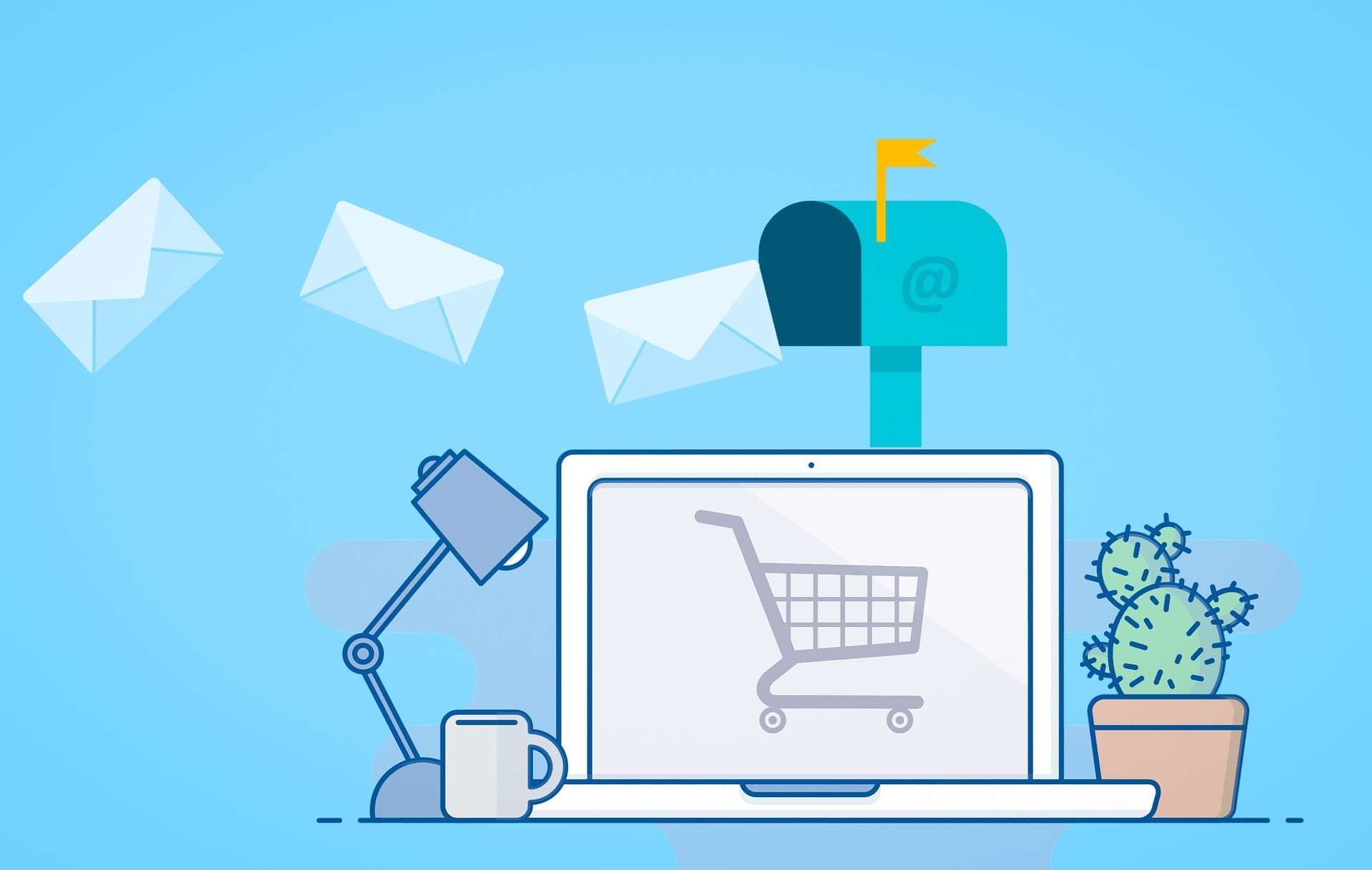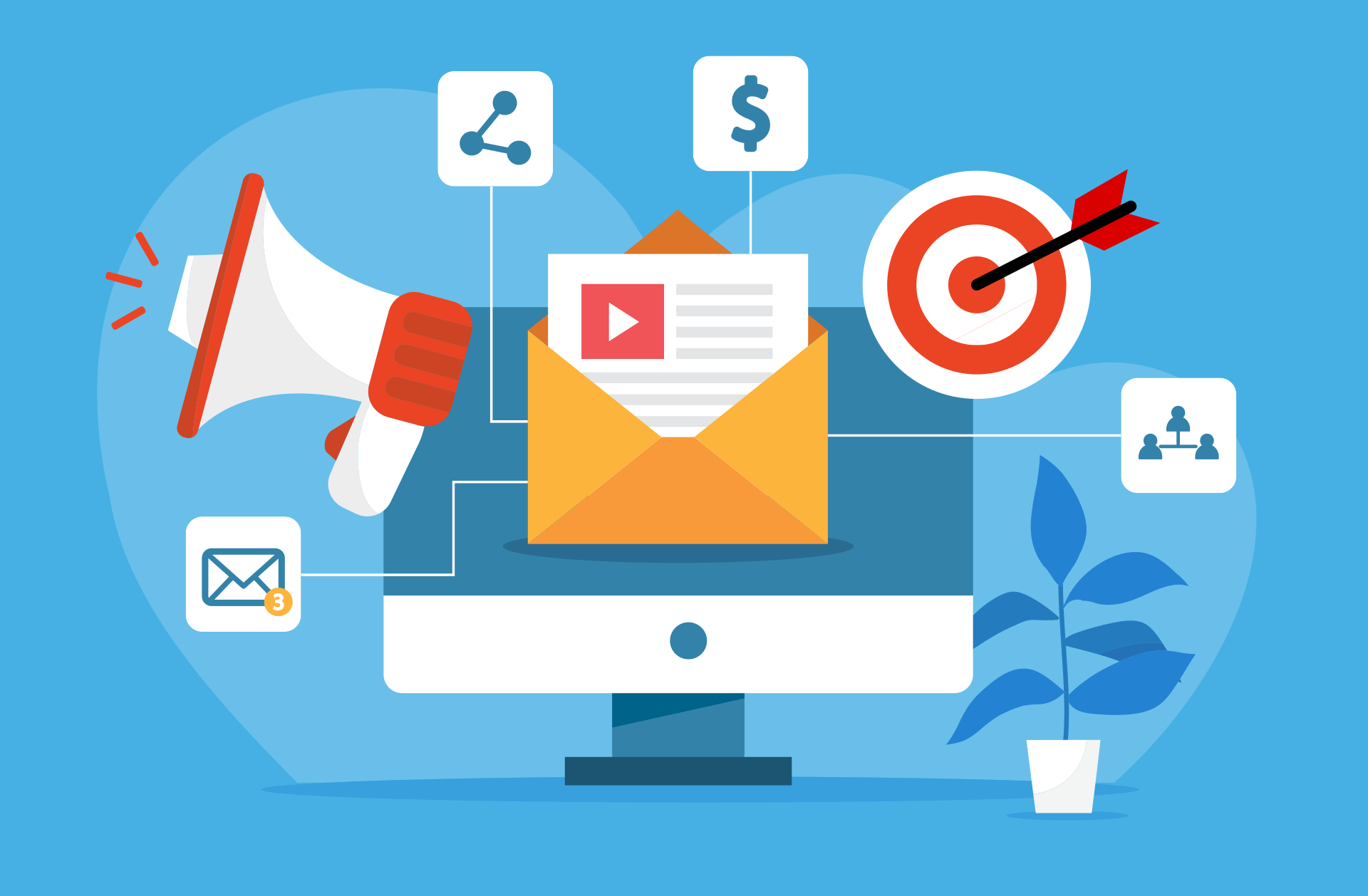
E-mail Marketing
A popular digital marketing tactic is e-mail marketing, which is sending promotional emails and offers to subscribers. The open rate is one of the most important indicators to monitor when assessing an email campaign’s efficacy. The percentage of subscribers who read an email is known as its open rate, and it offers crucial information about the effectiveness of the email’s subject line, timing, and content.
Businesses must concentrate on writing intriguing subject lines that grab subscribers’ attention and encourage them to open emails in order to increase the open rate. This can entail speaking in an individual’s voice, posing probing questions, or creating a sense of urgency.
Another essential metric to consider in email marketing is the click-through rate (CTR), which measures the percentage of subscribers who click on a link within the email. A high CTR indicates that the email’s content and call-to-action (CTA) were effective in driving engagement and motivating subscribers to take action.
To improve the CTR, businesses should focus on crafting clear and concise CTAs that guide subscribers towards the desired action. Additionally, it is important to ensure that the email’s content is relevant, informative, and engaging, and that the landing page is optimized for conversion.
Segmenting the subscriber list according to particular factors, such as demographics, behavior, and interests, is a useful method for increasing the open rate and engagement of email marketing. Businesses may give more relevant and customized information that resonates with subscribers and encourages engagement by sending emails to specified groups.
Businesses can further refine email campaigns with A/B testing, which includes comparing two copies of the same email to see which performs better, in addition to segmentation. As a result, the email strategy can be improved by determining the most effective email components, such as subject lines, CTAs, and content. Ensuring compliance with pertinent laws and regulations, such as the CAN-SPAM Act in the United States and the General Data Protection Regulation (GDPR) in the European Union, is another crucial part of e-mail marketing. These regulations provide specifications for email marketing, including the need for an opt-out method, a physical address, and subscriber consent.
Businesses should concentrate using opt-in forms to establish a quality email list rather than buying email lists or employing spamming methods. This can increase the likelihood that subscribers will be engaged in the content and interact with the emails. Businesses may use e-mail marketing as a potent tool to interact with customers, develop connections, and increase conversions. To be successful, email marketing must be approached deliberately and strategically.
It is essential to choose the ideal email service provider (ESP) that suits the needs of the company in order to guarantee the success of an email marketing campaign. There are many ESPs on the market, and each has different features, pricing, and integrations.
Businesses should take into account variables like subscriber list size, required level of customization and automation, and capability to track and analyze KPIs when choosing an ESP. Additionally, it is crucial to assess the ESP’s deliverability rate because it ensures that emails get to subscribers’ inboxes and are not marked as spam.
Finally, it is important for businesses to comply with laws and regulations governing e-mail marketing, such as the CAN-SPAM Act in the US and the GDPR in the EU. This includes obtaining consent from subscribers, providing a clear and easy-to-find unsubscribe option, and including the business’s physical mailing address in the email.
In summary, e-mail marketing can be an effective way for businesses to connect with customers and drive sales. By focusing on segmentation, delivering valuable content, and complying with laws and regulations, businesses can improve the effectiveness of their email campaigns and achieve their marketing goals.
Creating an email list of receivers who have chosen to receive communications from the sender is a common practise in email marketing. These recipients can be acquired in a variety of ways, including through online sign-ups, purchases, or subscriptions. The sender can design and send emails utilising an email marketing platform or software that provides for customization, tracking, and automation once the email list has been built.
Creating interesting and pertinent information that appeals to the target audience, using personalised subject lines and email bodies, including appealing call-to-action (CTA) buttons or links, and optimising for mobile devices are typical components of effective email marketing campaigns. Email marketing must also adhere to all applicable laws and regulations, including gaining recipients’ consent before sending emails (opt-in), offering a means for recipients to unsubscribe from future emails, and more.
E-mail marketing has several advantages, including low cost, broad audience reach, high return on investment (ROI), and capacity to segment and target particular demographics. Managing email lists, ensuring deliverability, avoiding spam filters, and sustaining engagement and open rates may all be difficulties. In conclusion, e-mail marketing may be a useful instrument in a thorough digital marketing strategy, assisting companies and organizations in connecting with their audience and achieving their marketing objectives.

E-mail Automation
E-mail marketing can help developing automated email sequences or processes using the automation features that are frequently available in e-mail marketing systems. These can be activated in response to particular events or actions, such as the addition of a new subscriber to the list, a transaction being made, or a birthday. Email automation can help you save time and effort while still sending subscribers timely, pertinent emails.
The process in e-mail marketing of employing technology and software to send pre-scheduled, targeted, and automated emails to subscribers or customers depending on particular triggers or activities is known as email automation, also known as e-mail marketing automation. Without having to manually send each email one at a time, email automation enables marketers to streamline their e-mail marketing operations and provide subscribers with timely and pertinent material.
E-mail Segmentation
The process of email segmentation is breaking the email list up into smaller groups according to predetermined criteria, such as demographics, preferences, actions, or previous interactions. By segmenting the email list, more focused and pertinent messaging can be sent, thereby increasing engagement and conversion rates.
The technique in e-mail marketing of segmenting an email list into more narrowly focused groups based on predetermined standards or traits is known as email segmentation. Instead of using a one-size-fits-all approach, this enables e-mail marketing to deliver customized and pertinent emails to distinct groups of subscribers. By ensuring that subscribers only receive information that is interesting and relevant to them, email segmentation can increase open rates, click-through rates, and engagement.

Businesses can utilize e-mail marketing automation to automate and optimize the email campaign process in addition to choosing the appropriate ESP. To send triggered emails depending on subscriber behavior, such as reminders for abandoned carts, welcome emails, and re-engagement campaigns, automation technologies can be employed.
Making sure that the email design is eye-catching and optimized for various devices and screen sizes is another crucial component of e-mail marketing. Emails must be mobile-friendly and simple to read on mobile devices due to the growing use of mobile devices.
Businesses could also employ powerful design components to draw subscribers in and urge them to interact with the material, such as a clear and appealing subject line, top-notch graphics, and a well-thought-out layout. Additionally, companies can utilize customization strategies to give subscribers a more tailored and interesting experience, including utilizing their name in the email’s body or subject line.

E-mail marketing may be an effective tool for companies to engage with customers and encourage conversions, but it necessitates a smart and deliberate approach. Businesses can develop efficient email campaigns that produce tangible results by concentrating on important KPIs, choosing the appropriate ESP and automation tools, and optimizing the email design for engagement and mobile-friendliness.
Finally, companies should regularly monitor and assess the analytics of their email campaigns to gauge the success of the campaign and pinpoint areas for improvement. Open rates, click-through rates, conversion rates, and unsubscribe rates are important metrics to monitor.
These metrics can help organizations determine what aspects of their email campaigns are effective and ineffective so they can make data-driven decisions to optimize and enhance their efforts over time. Different email components, such as subject lines or calls-to-action, can be tested using A/B testing to see which strategy is more effective for attracting subscribers and generating conversions.
E-mail marketing can be a cost-effective way for businesses to reach their target audience and drive sales. However, with the increasing amount of email traffic, it is becoming more difficult to stand out and capture subscribers’ attention.
To improve the effectiveness of an e-mail marketing campaign, businesses should consider segmenting their email lists based on subscriber behaviour and preferences. This allows businesses to tailor their email content to the specific interests and needs of the subscriber, increasing the chances of engagement and conversion.
Furthermore, businesses should ensure that their e-mail marketing is valuable and relevant to the subscriber, providing them with useful information or exclusive offers. By delivering value to subscribers, businesses can build trust and loyalty, increasing the chances of repeat sales and referrals.
In conclusion, e-mail marketing may be a useful tool for companies looking to interact with clients, foster connections, and increase conversions. However, it necessitates a deliberate and purposeful strategy that emphasizes important KPIs, adherence to rules and laws, and efficient email design and automation. Businesses can accomplish their e-mail marketing objectives and gradually expand their client base by adhering to these best practices and consistently analyzing and optimizing email campaigns.
